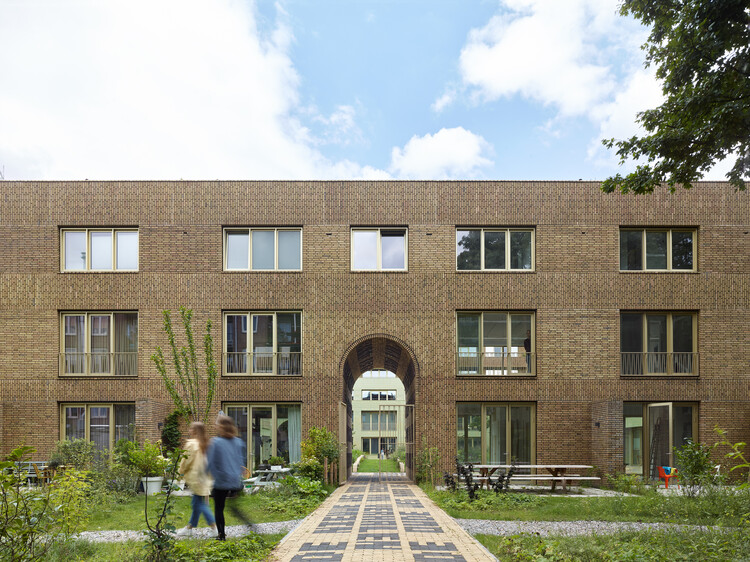
-
Architects: Korth Tielens Architects, Marcel Lok_Architect
- Area: 12676 m²
- Year: 2021
-
Photographs:Dennis De Smet
-
Manufacturers: Deppe brickwork, Kawneer, Muhr brickwork, St Joris brickwork, Stahlbau, Vande Moortel
-
Lead Architects: Mike Korth, Marcel Lok, Gus Tielens

Text description provided by the architects. The Spaarndammerhart restores the urban fabric of the Spaarndammer neighborhood. The street that disappeared in the 1970s for the construction of the local school, Spaarndammerschool, has been restored. The plan also brings back two street walls and adds a public courtyard to the neighborhood. Accessible through two large gates, it also connects to De Klerk's iconic ‘The Ship’ building. In fact, the neighborhood is characterized by several world-famous monuments of the Amsterdam School.










































